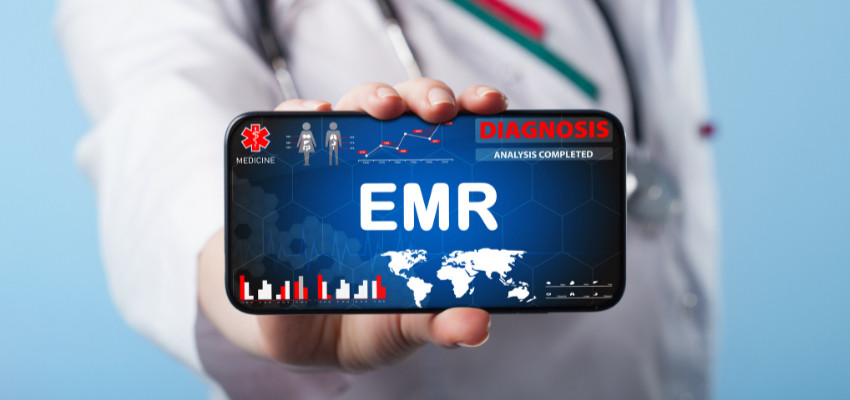Show:
How Integrating EMR and CRM Systems Unlocks Patient-Centered Marketing for Clinics
Healthcare is evolving. So is the way clinics engage with their patients. But while Electronic Medical Records (EMR) systems have revolutionized how care is documented, most practices still struggle to connect that data to meaningful patient outreach. Enter CRM: the missing link between clinical operations and personalized healthcare marketing.

The real game-changer? Integrating your EMR and CRM systems—bringing together your clinical and marketing tools to deliver timely, relevant, and patient-centered communication. For clinics already using practice management programs, adding this marketing layer can supercharge both efficiency and engagement.
Let’s break down how this powerful combination works and why more clinics are using it to grow smarter, not just bigger.
EMR Software: The Operational Engine of Modern Clinics
At its core, EMR software powers the clinical side of your practice: documenting visits, managing e-prescriptions, storing diagnostic history, and organizing patient data. It’s the foundation of any digital healthcare workflow. Whether you’re running a multi-provider clinic or a solo practice, your EMR houses everything from medical histories to allergy records.
But while EMRs are rich in patient data, they’re often siloed from marketing tools. This means your team is sitting on a goldmine of insights—without a clear way to turn those insights into action.
CRM: The Marketing Brain Your Clinic Might Be Missing
Customer Relationship Management (CRM) systems were built for engagement. While traditionally used in sales and retail, CRMs are quickly finding their place in healthcare. They handle appointment reminders, feedback collection, patient lifecycle campaigns, and re-engagement workflows.
In healthcare, a CRM helps you track where a patient is in their journey—are they a new lead, an active patient, or someone who hasn’t visited in 12 months? But without access to EMR data, your CRM is guessing instead of knowing.
That’s where integration comes in.
Real-World Use Cases: What Happens When You Combine EMR and CRM?
Here’s what a connected workflow looks like when your EMR and CRM are integrated:
- Personalized Follow-Ups
A patient treated for high blood pressure receives an automated email with diet tips and a reminder to book a follow-up in 90 days. - Reactivation Campaigns
The CRM identifies patients who haven’t visited in 12+ months and automatically sends a recall message based on their last diagnosis. - Automated Feedback Loops
After every appointment, patients get a satisfaction survey triggered by the EMR’s appointment status update. - Health Education Campaigns
Diabetic patients get newsletters with management tips, recipes, and event invites—personalized using EMR data.
This level of segmentation and timing simply isn’t possible without integrated systems. And for practices relying on medical billing software for home based business setups, this kind of automation can drastically reduce the manual lift involved in keeping patients engaged while managing backend processes.

Benefits of EMR-CRM Integration
Let’s get into the “why” behind this investment:
✅ Better Patient Experience
Patients receive more relevant communication—no more generic emails or off-topic reminders. This builds trust and makes your practice feel more attentive.
✅ Streamlined Operations
Your front desk team won’t need to manually export patient lists or retype data. Integration cuts redundant admin work and reduces errors.
✅ Higher Retention and Revenue
Automated recalls, rebookings, and condition-specific campaigns drive more appointments—especially for services like preventive screenings or chronic care.
✅ HIPAA-Ready Marketing
Modern CRMs designed for healthcare allow you to stay compliant while still leveraging sensitive data for smarter marketing.
Integration in Action: A Quick Case Snapshot
A pediatrics clinic was struggling with missed annual wellness visits. By integrating its EMR with a healthcare-focused CRM, the clinic was able to:
- Identify children overdue for visits
- Send automated email and SMS reminders
- Book follow-ups directly from the campaign
Result: A 38% increase in scheduled appointments over the next quarter—with zero manual work.
Challenges to Consider
Integration isn’t plug-and-play for every clinic. A few things to keep in mind:
- Data Security: Any solution must be HIPAA-compliant and encrypt data in transit.
- Vendor Compatibility: Not all EMRs or CRMs play nicely together. Choose tools with open APIs or middleware support like Redox or integrations via FHIR.
- Training: Your team may need new SOPs to use the CRM effectively.
- Cost: There might be upfront costs for integration partners or software add-ons.
Still, when weighed against the revenue gains and time savings, the ROI often justifies the investment—especially for practices aiming to scale.
The Future Is Unified: Patient Experience Platforms
We’re moving toward a future where EMR, CRM, billing, and engagement tools aren’t separate at all—they’re part of a single ecosystem. These unified patient experience platforms will allow clinics to:
- Use AI to send predictive appointment reminders
- Track patient sentiment across touchpoints
- Automatically adjust care plans and communication strategies
- Integrate directly with billing and scheduling systems for end-to-end optimization
Final Thoughts
When you connect your EMR and CRM, you’re not just syncing systems—you’re aligning your entire practice around the patient.
That’s the key to patient-centered marketing. And it’s what separates clinics that scale effortlessly from those stuck juggling spreadsheets and missed appointments.
If you’re using EMR software but your marketing still feels one-size-fits-all, it might be time to think bigger—and integrate smarter.

 Return to Previous Page
Return to Previous Page








